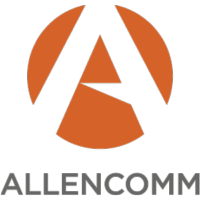Expanding The Purpose Of Onboarding
Onboarding is crucial for the future-readiness of an organization. But not all onboarding is equal. For some leaders, it’s a way to get new team members up to speed on culture and processes, which is a great start. However, there may be untapped opportunities to improve the organization’s ability to grow quickly, respond to volatility, and strengthen long-term affiliation among teams by taking the learning journey to the next level with experience-first design.
How does your business approach onboarding today, and how might you approach it tomorrow? Expanding the purpose of onboarding training to focus more on experience and performance, not just the new-hire orientation basics, can better prepare your own learners for their new roles while giving your business the competitive advantage it needs to pull ahead.
Developing Experience-First Onboarding Programs
Let’s look at 3 ways you can begin to transform your onboarding to generate new results.
1. Do More, Train Less
Effective onboarding programs prioritize context over content to optimize engagement. It’s less about how much the learner can read and retain, and more about how the information is rooted in real-world relevance and application. L&D leaders looking to elevate their onboarding can begin by reviewing the relationship between the employee experience (EX) and the learner experience (LX).
- Employee experience relates to the experience employees have from the day they sign their offer letter to their last day on the job. It’s their journey as they meet others, connect with the organization’s culture, how they feel about the environment they work in, and their professional growth. According to Gallup, one-third of employees strongly agree their organization’s mission or purpose makes them feel like their job is important. [1]
- Learner experience focuses on the experience someone has within a learning environment—how the learning is delivered to them, how they engage with content and practice opportunities, how they feel about the journey, and how it works within their learning style to set them up for success. It should be structured yet able to evolve with learners’ needs and organizational goals. [2]
You can align EX and LX by:
- Making the learning personal, realistic, and performance-focused
- Combining formal, social, and experiential learning to create long-term learner-centered experiences rather than one-off training
- Redesigning your onboarding learning paths to be more flexible and personalized
Combine these ideas into one scaffolded learner journey to create sustainable, continuous learning with support over time.
2. Create Α Scaffolded Learner Journey
A scaffolded learner journey is like a map, with guidance up front to show learners where to go and what to do. It breaks down the onboarding process into smaller, more manageable steps, which helps learners feel less overwhelmed and instead encourages them to begin building a foundation of basic concepts. L&D leaders can incorporate feedback checkpoints to provide support during the early stages, and then slowly reduce this guidance over time as learners begin to find their footing and become independent.
After learners become more confident in applying the basics, they feel empowered to take ownership over their own experience over time. They hold themselves accountable for doing things the right way the first time—or knowing where to go for help.
Here are some ideas you can use to create a scaffolded journey for your onboarding program:
- eLearning modules can introduce foundational information, while microboosters can support this learning over time with easy-to-reference information available on the go, at any moment.
- Instructor-Led Training, roleplay scenarios, simulations, and mentoring options can all give learners critical hands-on practice opportunities to apply what they’ve learned and receive feedback in a safe environment.
- Toolkits with resources such as FAQs, quick reference guides, checklists, action planners, or journals can provide support and prompt learners to reflect on the value of what they’ve learned, as it applies to them personally.
As learners continue to actively engage with the solution and beyond, not only will they continue to build proficiency in skills and behaviors related to their role, but they’ll also develop valuable decision-making skills that can further enhance performance. Also, remember: the technology used to deliver the experience is just as impactful as the experience itself.
3. Integrate Cutting-Edge Technology
It’s no secret that technology is always evolving, so organizations that are able to embrace technology and efficiently use it to its fullest potential are the ones who can stay ahead of the competition. But learning technology itself has so many definitions and uses within the L&D space.
It’s not just how learners access their courses online but also how they explore gamified activities to engage with content and apply concepts. It’s how measurement strategies are applied to gather, share, analyze, and use data to improve performance over time. It’s the rich media design within the solution to better illustrate concepts and connect learners with the heart of a brand. Technology even allows leaders to dive deeper into the realm of accessibility—and, in turn, possibility—to design immersive onboarding programs that include everyone, regardless of disability or circumstance.
Even something as simple as a dashboard can unite multiple components of the experience and act as a valuable “compass” to show learners where they are now and what’s ahead on their journey. Learners who may otherwise have felt lost or anxious now have clarity into what’s expected of them, and they can become more confident at navigating every step along the way.
For example, AllenComm partnered with an American multinational technology conglomerate to design and develop an onboarding program for new engineers. They had to be able to do their jobs better and faster from day one. The audience was driven by meaningful but challenging tasks that illuminated the impact their decisions had on the company. The final solution was a strategic blend of web-based training and Instructor-Led Training, with visibility around scores and code solutions to motivate learners to carefully complete tasks and prepare for their actual responsibilities on the job.
Apply Αn Experience-First Design Τo Your Own Onboarding Program
As an L&D leader, you want to see your team members succeed. You also want to generate the type of results your stakeholders need to feel confident in the onboarding investment. Think about how these 3 strategies can expand your onboarding approach to better target learner and business outcomes by asking yourself:
- How does our program consider our learners’ needs in addition to our organizational needs?
- How does it prioritize the EX and align it with the LX?
- Does it effectively prepare new hires to take on their new roles and responsibilities confidently? If not, which roles or responsibilities can we better target to improve outcomes later?
- Does it prioritize experience over learning? For example, are practice opportunities meaningful and contextualized in realistic application? Can learners see how being able to understand and apply these concepts provides value to their jobs and skills? If not, how can we incorporate better experience-first design to accelerate learner readiness?
- Do we leverage technology to the fullest potential? If not, where can we better use the tools we have now—or invest in new ones—to better support learner performance?
Note any ideas you have for how you can use experience-first design to connect learners with your organization—your brand, your values, your expectations—and then take it a step further to help them develop the practical skills needed to perform well in their new roles, which also improves your organization’s resilience and readiness in navigating future challenges.
References:
[1] How to Improve the Employee Experience
[2] Creating an Effective Onboarding Learning Experience for the Evolving Workplace

AllenComm
The experts at AllenComm solve business problems with beautiful custom learning solutions. We bring creativity into instructional design. We change behaviors and influence choices. We build better training.

